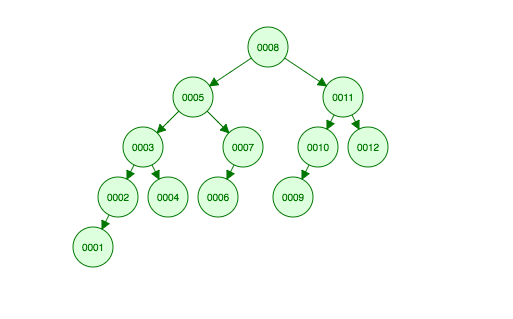There is an interesting comment in the JDK 8 Javadocs that occurs 14 times describing the Arrays.sort() quicksort implementation for primitives, it states:
The sorting algorithm is a Dual-Pivot Quicksort by Vladimir Yaroslavskiy, Jon Bentley, and Joshua Bloch. This algorithm offers O(n log(n)) performance on many data sets that cause other quicksorts to degrade to quadratic performance, and is typically faster than traditional (one-pivot) Quicksort implementations.
Is that statement accurate? A tremendous amount of research has been done on quicksort and dual-pivot quicksort however some of the results are conflicting. Ten years after Java switched to dual-pivot quicksort for primitives other languages have kept an optimized single-pivot implementation instead so the debate is still open as to why Java switched and other languages did not. To better understand the answer and differences I ported the Go single-pivot quicksort to Java and used the Java JDK 8 dual-pivot quicksort code as-is except changing the insertion sort threshold to match Go’s choice at <= 12 elements and using a trivial non-optimized insertion sort algorithm for each.
Conveniently, Go publishes their code, tests & benchmarks so I ported just one test – “func countOps” from sort_test.go and the results were very interesting:
Java 8 Dual-Pivot q-sort swaps: insertion sort swaps: total swaps
100 elements: 144 : 154 : 298
300 elements: 554 : 474 : 1028
1000 elements: 2458 : 1317 : 3775
3000 elements: 8964 : 3952 : 12916
10000 elements: 36407 : 13317 : 49724
30000 elements: 125633 : 39349 : 164982
100000 elements: 493535 : 132425 : 625960
300000 elements: 1461032 : 400095 : 1861127
1000000 elements: 5729345 : 1330589 : 7059934
Elapsed time:287ms, sort function calls: 325874
Go Single-Pivot
100 elements: 108 : 245 : 353
300 elements: 493 : 488 : 981
1000 elements: 2070 : 1576 : 3646
3000 elements: 7217 : 4932 : 12149
10000 elements: 28355 : 16353 : 44708
30000 elements: 96513 : 49123 : 145636
100000 elements: 365602 : 163487 : 529089
300000 elements: 1209370 : 492204 : 1701574
1000000 elements: 4459733 : 1639037 : 6098770
Elapsed time:256ms, sort function calls: 176646
The input data is the same in both cases from the same random number generator seeded at 0. Most notable is difference in sort function calls, Go uses 149,228 fewer total calls to sort the data! It also completed faster and the code was not even optimized at all for Java so the comparison should favor Java! Also Go wins again comparing number of swaps! Reviewing the optimizations both implementations choose is very interesting. Don’t underestimate how much work has gone into these sorting functions over the years! Go’s implementation is trying to minimize stack depth, partially to avoid switching to heapsort and one optimization they use is to fall through to insertion sort after calling quicksort in a while loop. Here are some lecture notes about this idea.
Go’s slightly simplified sorting code:
func quickSort(data Interface, a, b, maxDepth int) {
for b-a > 12 { // Use Insertion sort for slices <= 12 elements
if maxDepth == 0 {
heapSort(data, a, b)
return
}
maxDepth--
mlo, mhi := doPivot(data, a, b)
if mlo-a < b-mhi {
quickSort(data, a, mlo, maxDepth)
a = mhi // i.e., quickSort(data, mhi, b)
} else {
quickSort(data, mhi, b, maxDepth)
b = mlo // i.e., quickSort(data, a, mlo)
}
}
if b-a > 1 {
insertionSort(data, a, b)
}
}
The dual-pivot quicksort in Java is significantly more complicated and why did they switch to it? A big reason is perhaps that the JDK 6 sort in Java did not take advantage of the optimization of calling insertion sort after quicksort. Interestingly both the JDK6 and Go versions have a similar comment that they are “following Bentley and McIlroy…”
Conclusions
There are some interesting optimizations in both implementations and the newly proposed Java implementation
- If the Java & Go approaches adopted some of the ideas currently used in other languages both would potentially improve – there is still fun & interesting work to do. Can you write a tail-recursive style dual-pivot quicksort?
- The newer language, Go, publishes the source code, unit tests & benchmarks so open source contributions are much easier. Years ago Java’s approach to the JVM helped create a huge Java ecosystem of shared open source libraries but now the language is showing it’s age in many regards and other languages are likely to improve faster benefitting from better integrating unit tests & benchmarks among other things.
- Both implementations take a very different approach to protecting against O(n squared) worst case performance – I may analyze this if people are interested.










